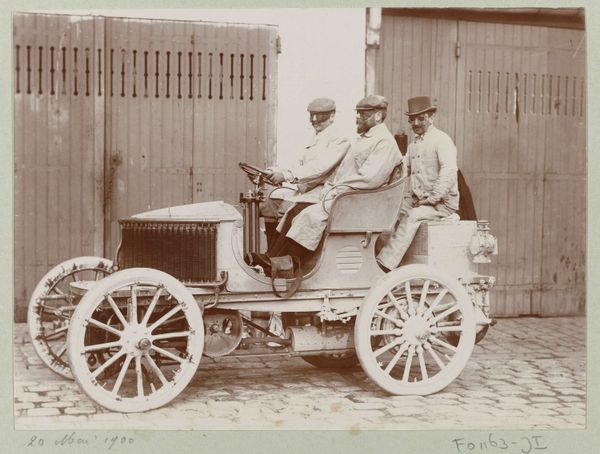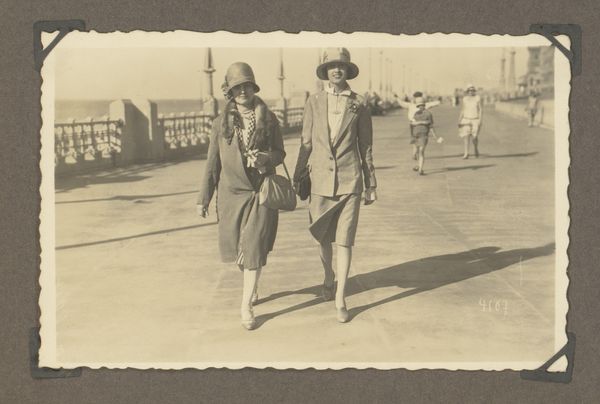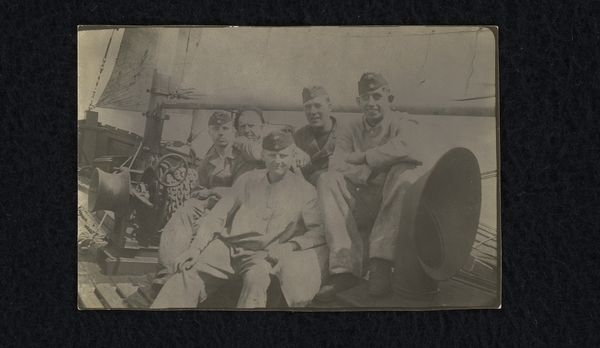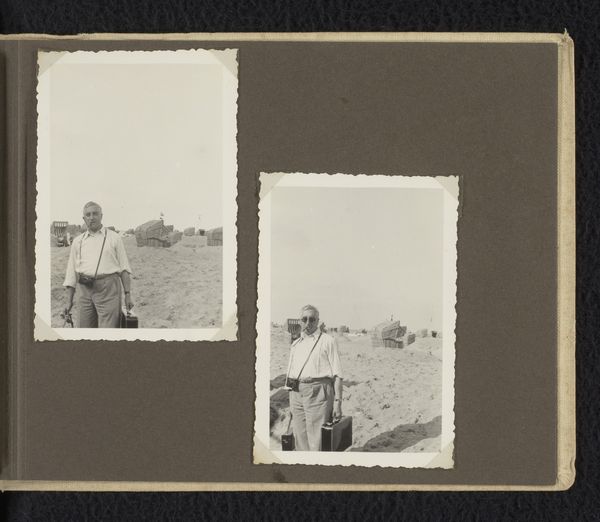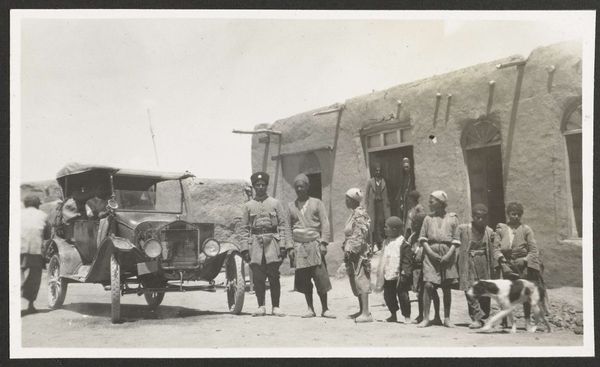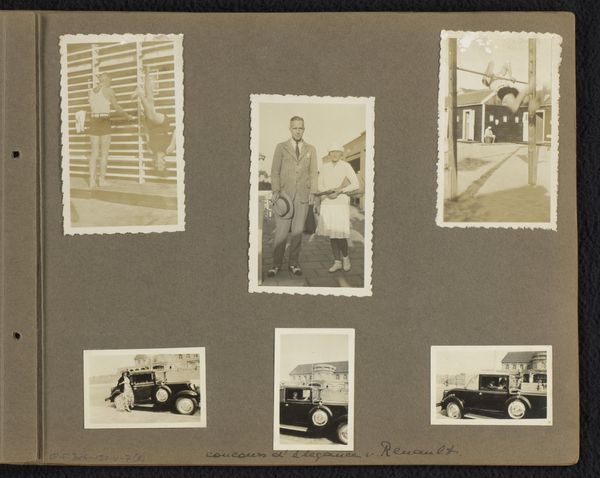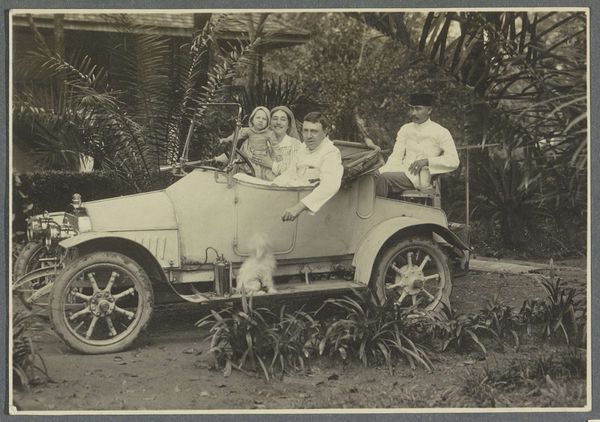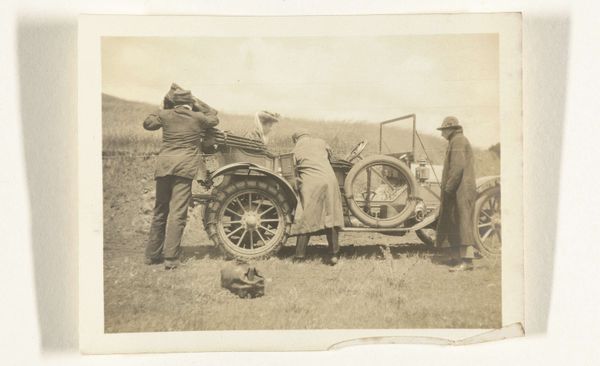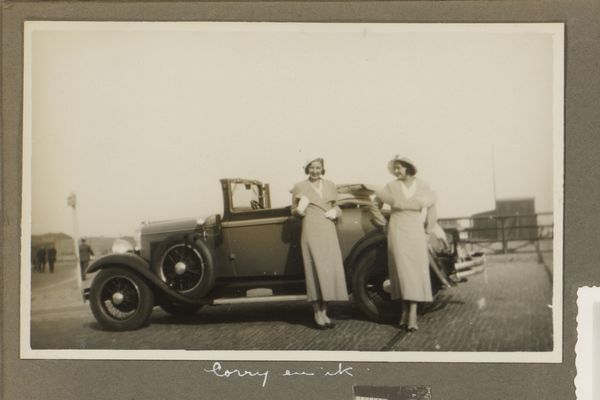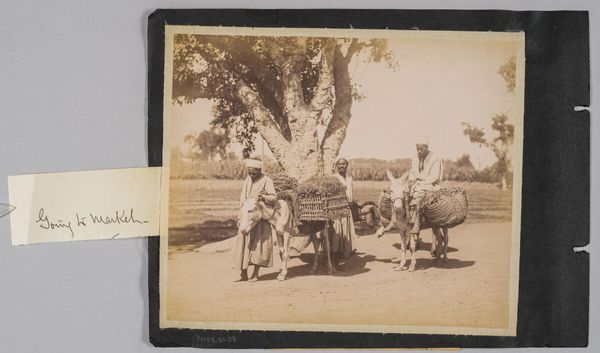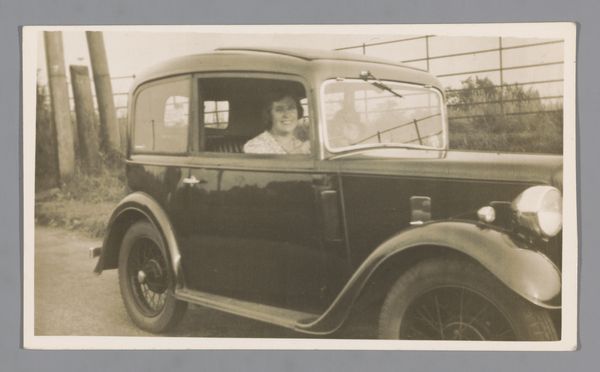
Twee Ford auto's met de eigenaars Hasan en Mohamed en hun knecht Possibly 1925 - 1926
0:00
0:00
photography, gelatin-silver-print
#
portrait
#
photography
#
gelatin-silver-print
#
genre-painting
#
paper medium
#
realism
Dimensions: height 75 mm, width 126 mm, height 124 mm, width 184 mm
Copyright: Rijks Museum: Open Domain
Curator: Let’s discuss this silver gelatin print titled “Twee Ford auto's met de eigenaars Hasan en Mohamed en hun knecht”, possibly created between 1925 and 1926 by A.G.A. van Eelde. The direct translation would be: “Two Ford cars with the owners Hasan and Mohamed and their servant.” My initial reaction is a sense of stark stillness. Editor: Yes, that stillness really strikes me too, there’s a strange quality, almost melancholic in the composition. The figures seem self-conscious in relation to the camera, particularly that visible social hierarchy represented so bluntly in the car’s presence and its relationship to each figure. It begs many questions. Curator: Absolutely. What we're looking at is not just a photograph but a social document. It reflects the changing social dynamics of the period and class distinctions embedded within colonial structures, where motor vehicles could be seen as potent signifiers of wealth and modernity. We can see that in their clothes as well as their relation to each other and their relative distance from the cars themselves. Editor: Right. It highlights the complex relationship between these individuals, perhaps suggesting class dynamics inherent in these kinds of travel adventures at the time. You can sense their awareness of being portrayed. Do you think van Eelde, as the photographer, was explicitly engaging with colonial discourse or simply documenting what he saw? Curator: It's likely both, or more complex, perhaps, than either of those alone. The very act of photographing these individuals and labeling them within this colonial-era description implies a certain framing. I find myself wondering, who was this image meant for? Was it intended for circulation back in Europe? Editor: Good questions. The work, while technically a "genre-painting," as tagged in the metadata, functions more as a complex interplay of identity, power, and representation. The way the individuals present themselves hints at those broader social constructs and cultural expectations. Curator: And what of these "modern" vehicles and their role within a postcolonial discussion. These cars open up distances that would have seemed vast and unknown to most. A sense of adventure maybe, a way of penetrating even further inland, both figuratively and physically. They speak to aspirations and a complex dance of identities being renegotiated within that historical moment. Editor: Ultimately, looking at van Eelde’s silver gelatin print gives you so much more to consider in those formative, turbulent moments for colonized states, especially in how photography itself contributed to, and captured those realities, one carefully posed portrait at a time. Curator: Agreed, and thinking about the era itself is a good reminder of the changing dynamic during that interwar period in Dutch colonial territories. A single image holding an entire network of social history.
Comments
No comments
Be the first to comment and join the conversation on the ultimate creative platform.

